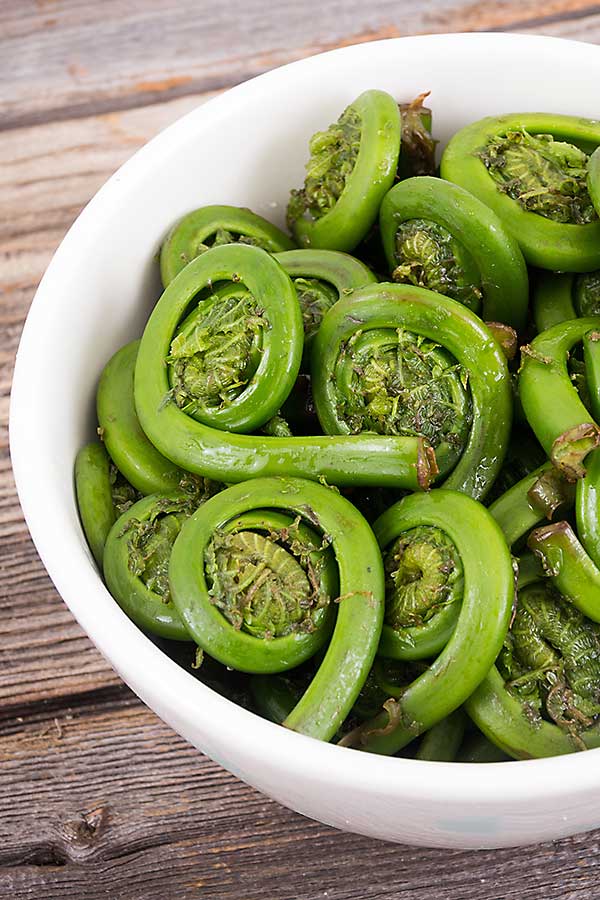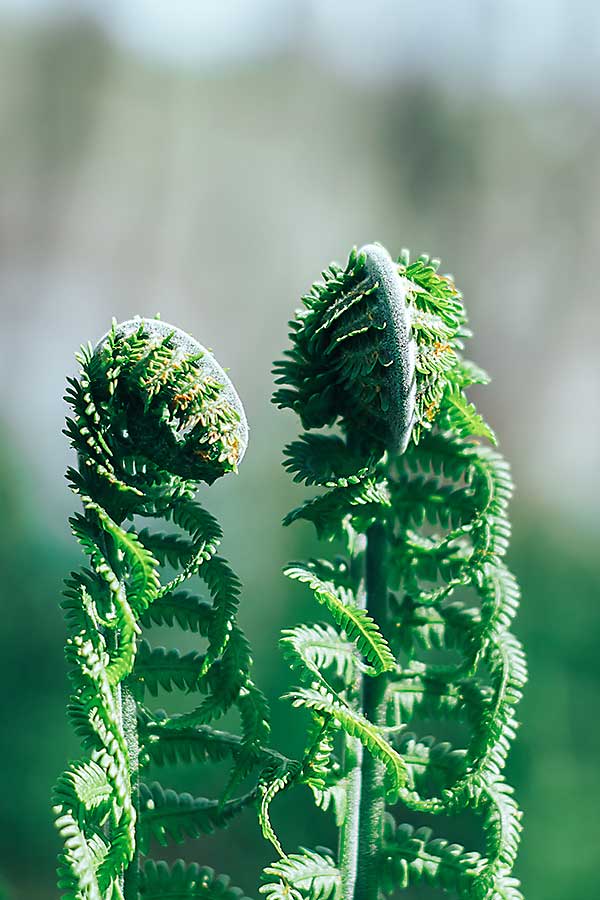Fiddlehead
A fiddlehead is the tightly curled-up frond of a young fern, often used in cooking as a vegetable. A fiddlehead is also sometimes referred to as fiddlehead green. There are several different types of fiddlehead ferns, including Bracken, Cinnamon fern, Royal fern, Lady fern, Midin, Flowering fern or Zenmai, Western sword fern, Vegetable fern, and Ostrich fiddlehead fern. The most popular, and considered the safest to eat, is the Ostrich fiddlehead fern.
How do you harvest fiddleheads?
Fiddleheads are often foraged from the wild in certain areas of the USA and Canada, and there is only a short window of time when they are able to be harvested. This is usually before springtime, when ferns begin to grow new shoots. Fiddleheads are most often harvested from ostrich ferns and foragers will often sell their harvest to markets.
Fiddleheads must always be harvested by a foraging expert, as some types of fiddlehead are highly toxic and can be immediately poisonous. Some varieties of fiddleheads have also been shown to be carcinogenic. Fiddlehead greens must be used immediately after harvesting as they will quickly start to lose their taste and texture if not stored properly. Unharvested fiddleheads that remain on the plant will eventually unroll into a new frond.
What do fiddleheads taste like?
Fiddleheads have a light nutty and grassy flavour that is compared to being a hybrid of young spinach and asparagus. There are also light hints of artichoke and mushroom flavour.
How do you cook fiddleheads?
Fiddleheads don’t require much fuss or preparation when cooking. It is best to cook them lightly to enjoy their flavour and crisp texture. You can sauté, steam, or boil fiddlehead ferns before adding them to other dishes. They make a fantastic side dish for seafood or meat, and can also be placed on top of a dish for aesthetics and an extra flavour addition.
First rinse fiddleheads in cold water to remove any loose dirt before cooking. Do not eat fiddleheads raw, as they can carry food borne illnesses. You can lightly sauté or steam them, or boil them for about 6-8 minutes. Try not to overcook the fiddleheads as they will lose their crispy texture and delicate flavour.
It is best to eat fiddleheads as a side dish and in small quantities. They can cause stomach upset when eaten in larger amounts. Fiddleheads taste great when mixed into omelettes or quiches. They also pair wonderfully with lemony butter sauces like hollandaise. Simple is best here: it’s enough to just sauté your fiddleheads with garlic, olive oil, and lemon. If you feel like going the extra mile, sprinkle some feta cheese or grate some parmesan over the top.
Try to cook fiddleheads as soon as you can after harvesting. They will quickly start to lose flavour and crisp texture when stored for too long.
Nutritional benefits of fiddleheads
Fiddleheads are high in antioxidants, contain omega-3 and omega-6 fatty acids, and are also rich in iron and fibre. They are also packed with 17 minerals that are beneficial to the body, including calcium, potassium, phosphorus, magnesium, iron, zinc, and niacin. Fiddleheads are made from 87% water and also contain carbohydrates, fibre, protein, ash, and fat. They are also rich in vitamins A and C.
Private Chefs, Art of Dining
CHEFIN is a private chef platform that’s reimagining social dining.
You can easily connect with 1 of our 250 private chefs and treat your guests to restaurant-quality dining experiences in the comfort of your own home, office or chosen venue. From high-end dining to quirky social food experiences, the CHEFIN platform makes it effortless for you to access gourmet food that’s worthy of a Michelin-starred establishment.
What you get:
-
- Your very own private chef who is vetted and insured,
- A customised menu for your needs,
- 24/7 concierge support,
- Complete post-dinner cleanup,
- A fun, stress-free, and unforgettably dining experience!


